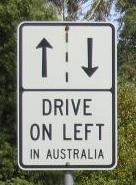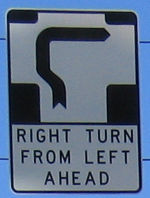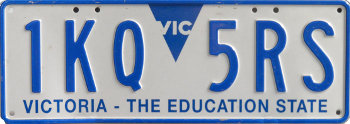
Road rules
Driving
Transport
Weather
Location & maps
Facts & figures
Communications
Holidays
Visitor information
Your safety
Government
General road rules

Road rules and regulations are strictly enforced in Victoria.
The basics
- Drive on the left side of the road
- Wear a seat belt at all times
- Do not drive if under the influence of illicit drugs
Speed limits
- Default speed limit in built-up areas: 50 km/h
- Default speed limit outside of built-up areas: 100 km/h
- Maximum road speed: 110 km/h (only on selected rural highways and freeways)
Mobile phone use
- It is illegal to use a hand-held mobile phone while driving or when not parked
- Pull over safely and park when you need to operate a hand-held mobile phone
- Hands-free mobiles can be used while driving, but only by drivers with full licences
Blood alcohol concentration (BAC) limits when driving
- Zero BAC applies for professional drivers (truck, bus or taxi), learner or probationary drivers
- BAC limit of 0.05% applies for all other drivers
Further information
Road rules unique to Victoria
While road rules are generally consistent throughout Australia, there are a few minor differences in Victoria and some extra rules covering some unique features of Melbourne's roads.
U-turns
U-turns are permitted at all traffic lights that control intersections unless signs advise otherwise.
Hook turns

Hook turns are required when turning right at some intersections in Melbourne which have tram lines running along them. Their purpose is to improve traffic flow by removing turning traffic from the right lane where there is no space for a dedicated turning lane. For areas where trams share the right lane of the road, the use of hook turns also ensures trams going straight ahead are not held up by right turning vehicles.
Some intersections in Melbourne's CBD and South Melbourne have hook turns.
To perform a hook turn, move into the left lane when approaching the intersection and advance across the intersection, coming to a stop within the lane that is marked for right turning traffic. Ensure you activate your right indicator. Observe the traffic lights on your right, which is the road you are turning into. Only complete the right turn when they change to green, which will occur after the traffic lights change to red in the road you are currently on.
Trams
Melbourne and some of its suburbs have an extensive tram network. A few tram routes are off-road, but most are on-road, with some sharing lanes with vehicles.
- Tramways. They are for the sole use of trams and have either raised dividing strips, traffic islands or double yellow lines to separate them from vehicles. You must not drive in tramways. You can only turn right across tramways if there is a break in the dividing strip or double line. When turning right, you must give way to all trams.
- Tram lanes. These are designated with overhead signs and a single continuous yellow line. They either operate permanently or during specific hours. While you cannot drive in those lanes, you are permitted to use them for up to 50 metres if you are turning right, so long as you don't delay any trams.
- Shared lanes. These lanes are marked with broken yellow lines and drivers are free to use those lanes so long as they don't delay trams.
A number of tram stops have either traffic islands or yellow safety zones with barriers that separate pedestrians from vehicles. At these stops, you do not need to give way to pedestrians entering and leaving trams.
Other tram stops are unprotected and you must give way to pedestrians entering and leaving a tram. When a tram is stopped and its doors are open, stop your vehicle at the rear of the tram, or if you are already beside the tram when the doors open, remain stationary. Once the tram's doors are closed and pedestrians are clear of the road, you can drive forward. If the tram remains stationary at a stop with its doors closed, the maximum speed at which you can pass that tram is 10 km/h.
Emergency vehicles
If an emergency vehicle is stopped on the side of the road with its lights flashing, you must not exceed 40 km/h when driving past that vehicle. You can increase your speed once you are a safe distance from the incident. This rule does not apply if the incident is on the other side of a divided carriageway.
The emergency vehicles this rule applies to have red, blue or purple flashing lights. These lights are on police, ambulance, fire, SES, enforcement and transport safety vehicles.
Number plates
Number plates are required to be displayed on a registered vehicle in order for it to be driven on public roads in Victoria.
An example of the current standard issue number plates for vehicles registered in Victoria is shown below. The format is two groups of one number followed by two letters. The slogan is "Victoria - The Education State".
Further details about number plates, including special interest and personalised versions, are available from VicRoads.
